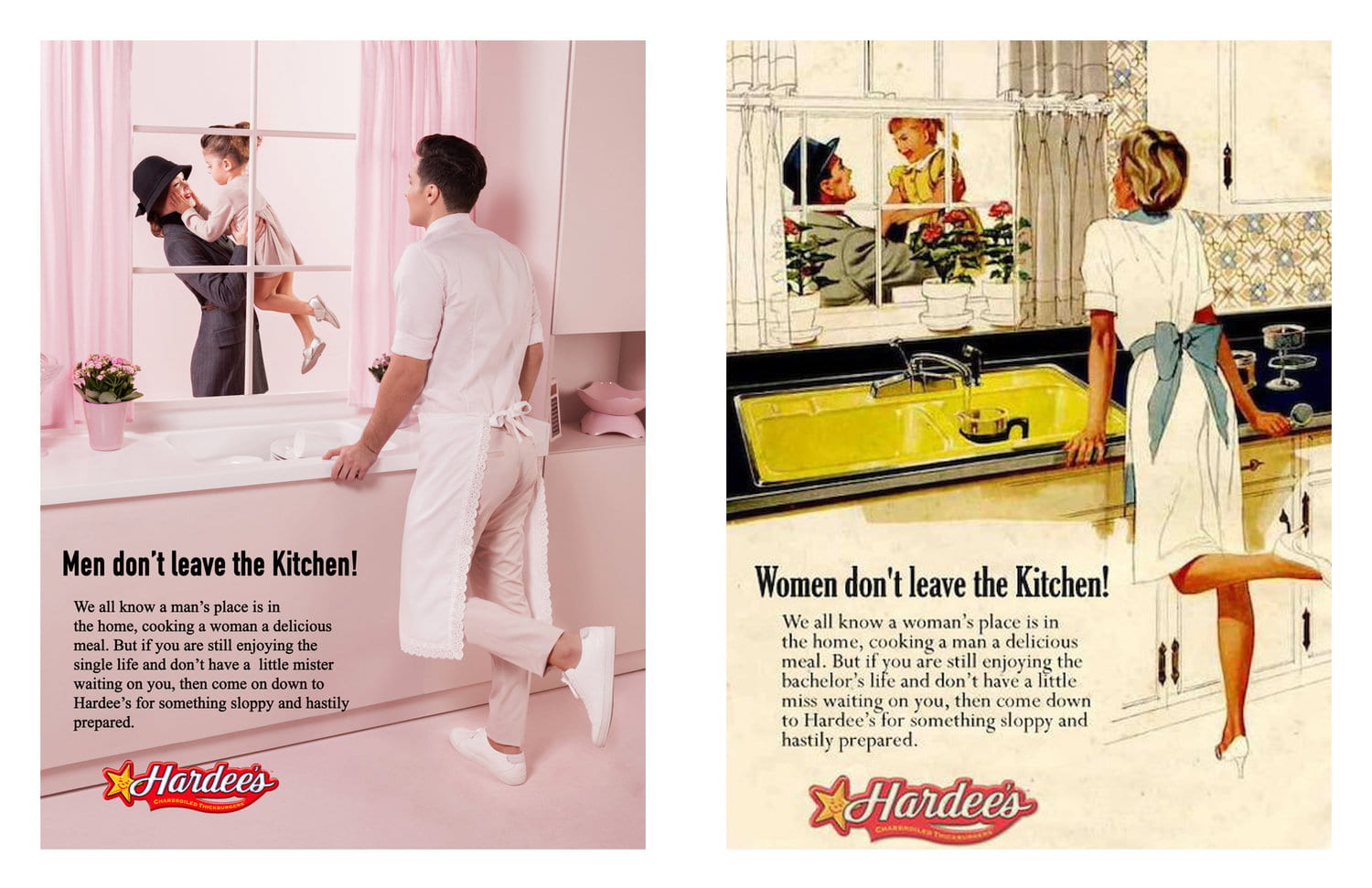During the past 8 weeks in class, we have been looking at a collection of work by Eli Rezkallah called “In a Parallel Universe”, a set of satirical parodies of old advertisements which are seen as racist or sexist in current times.
The way we have looked at Rezakallah’s work is by comparing, analyzing, and discussing their similarities and differences in his work vs the work of the original advertisers. Discussing why the ads are seen the way they are today is also important, as it helped us gauge how obscene some could be, and how Rezkallah can convert them into making them funny humorous to look at. Comparing the pieces of work from Rezkallah and the old ad makers really makes us analyse the differences Rezkallah has added, manipulated, or has kept the same to get his message approach. Things like colour, background, clothing, position, and much more can be interpreted in many different ways, and Rezkallah does leave his work open to a lot of imagination.
Learning new vocabulary was also an important task that we did, as this would later help us in writing analytical essays and to accurately describe specific techniques that an ad maker or Rezkallah employed in doing their work.
Why is Rezkallah’s work on identity and representation important?
Rezkallah’s work really makes us think about the privileged world we live in, and how we have gotten over the more traditional and socially conservative era (especially in the Western world). His work on identity and representation has made us more aware of traditional gender roles, how certain people are sexualised, and what extreme marketing tips are used.
In Singapore, and in the school we go to, there is not much analysis and talk about the hardships and stereotyping that certain groups of people have to go through. When looking at parodies of sexist ads that have been redone by Rezkallah, we can see what changes society have made, and the ideas that have developed since then in regards to treatment, but also sexualisation of women. Public opinion and perception of these ads and their associated stereotypes also influence their outlandishness and whether they will get an extra consumer. Appeal to the common man is what was and is present in advertising today, so unpacking the old ads and taking a look at them can also give us an idea of what (Western) culture was like back in the day.
Little Red Cap (Carol Ann Duffy) and In a Parallel Universe (Eli Rezkallah)
The story of Little Red Cap is significantly different in terms of content to the images published by Rezkallah, but they both have a common idea of relating to traditional gender roles in the way the characters act and are portrayed. It can also be mentioned that both stories explore the ideas of innocence and temptations.
Little Red Riding Hood, is portrayed as a cheerful little girl, innocent, and listens to every command from her parents. The way she is ordered to deliver items to grandma shows a superiority complex, with her being at the very bottom, and her mother and grandmother being on the top (in regards to age). It is clear that Little Red Riding Hood is unaware of most of her actions apart from delivering stuff to her grandma, and other daily tasks. The way the wolf conned her into believing that she was truly the granny, proved just how innocent and submissive her character is to the truth.
The same can be said about Rezkallah’s satirical parodies, since there is an aura of innocence expected from women in society, something that the readers to not figure out until the roles are reversed in the parody, which is not what the reader perceives as “normal” (traditional).

